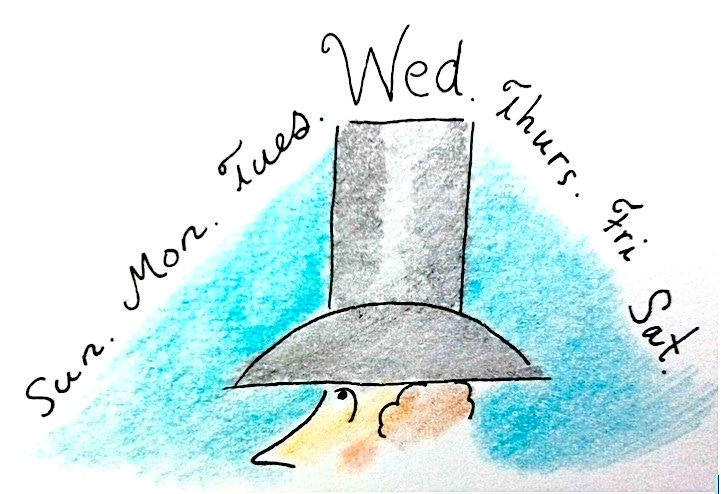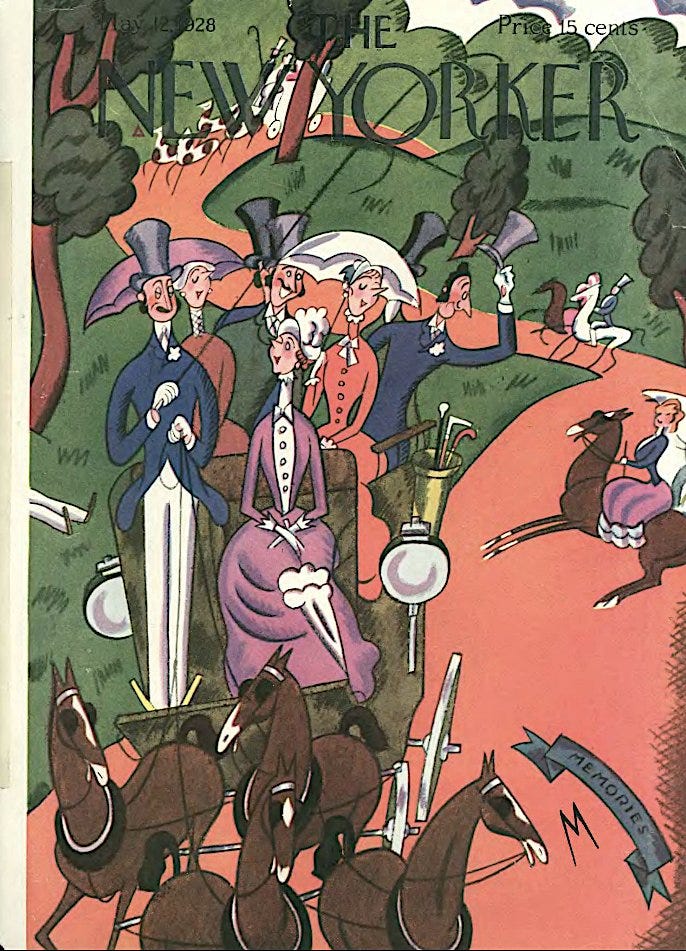Wednesday Spill: Edward Sorel’s New Yorker Horse Drawn Carriage Cover: A “Funny Sight Gag” Or Tina Vs. Ross? Or Tina & Ross?
Back in the old days, around the Fall of 1992 let’s say, when Tina Brown‘s very first edited issue of The New Yorker hit the newsstand, much was made of the Edward Sorel cover showing a “punker” riding in a horse drawn carriage, often referred to as a Hansom cab.
Some suggested it was symbolic: the old New Yorker (symbolized by the Hansom cab, of course) giving way to the new era (represented by the punker). Sorel himself talked about the cover in his wonderful memoir, Profusely Illustrated:
“When I submitted the sketch for that cover, I had nothing in mind other than to produce a funny sight gag, but when the finished drawing hit the newsstand, some people saw a deeper meaning. Was the insolent punk a stand-in for Tina Brown, who had no respect for tradition? Or unkindly did it mean that the vulgarians had taken over The New Yorker?”
If it was, as some saw it, an old vs new cover, one would have to have reached way way back in the magazine’s history — skipping the brief Robert Gottlieb era as the magazine’s editor, and skipping William Shawn‘s long tenure that began in 1952 — to the Harold Ross era, when horse drawn carriages appeared (infrequently) on the magazine’s cover.
In September of 1992, in a New York Times article, “Her First Issue At The Ready, Tina Brown Talks About The New Yorker,” Ms. Brown had this to say:
“Basically, my whole thrust has been to go back to Ross’s magazine…”
Taking Ms. Brown at her word, the theory of the old vs new “statement” of Sorel’s cover doesn’t make a lot of sense, unless in her mind she was connecting “her” New Yorker directly to Ross’s (I never heard of anyone interpreting Sorel’s cover that way). And so we return to the artist’s statement that he just “wanted to produce a funny sight gag.” Case perhaps not closed, but ever so slightly heading that way.
Here then are the Ross era covers that feature horse drawn carriages.
One (Jan 7, 1933) is by Rea Irvin, and three others are by Julian De Miskey: April 2, 1932, March 30, 1929, and May 12, 1928:
Two other covers from the era show horse drawn carriages, with the carriages (and the horses) playing a supporting role. March 25th 1933, by Harry Brown, and May 22, 1937, by Victor Bobritsky (aka “bobri”).








Fun!